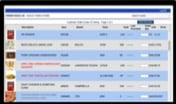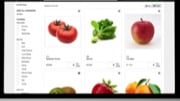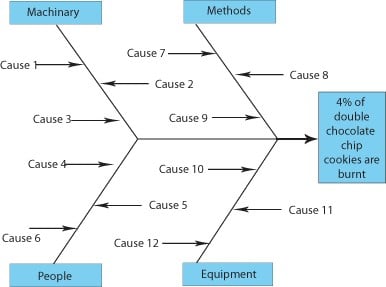There are a growing number of success stories in eCommerce and food distribution, including US Foods and their 2013 launch of eCommerce and mobile solutions. (You can read more in this Harvard Business School article.)
US Foods transformed by giving customers the ability to move beyond antiquated fax- and phone call-based ordering to online and mobile ordering. Efficiency, customer satisfaction rates, and sales responsiveness skyrocketed, as US Foods’ sales reps can now place customer orders while on the road.
As a small to midsized business, however, you might be thinking, “I don’t have the budget and resources to reinvent my company while keeping my current customers happy.” Luckily, you don’t have to – here are a few ways to get started in eCommerce if you’re an SMB in the food industry.
ECommerce Anywhere
The key to eCommerce success is making life easy for your customers, which includes enabling them to review their order and payment history, see customer-specific pricing, and see if you have enough inventory to satisfy their needs; they also want the flexibility to order and manage their account from their desktops, laptops, and mobile devices.
You also need to give your sales reps the ability to see what each customer sees, including customer-specific pricing and offers, so they can maximize the value of customer orders while ensuring accurate inventory management.
ECommerce as an ERP Extension
You can offer the features your customers want with a modern ERP platform. With a modern ERP, you don’t need to purchase a full-blown eCommerce system and start from scratch; you can start small by offering customers a lightweight sales portal that integrates with your ERP on the back end. This is a ‘quick win’ because your customers get an easy-to-use, intuitive front-end experience that requires little programming expertise on your part.
Your ERP system already manages product information, pricing, inventory levels, customer orders, etc., and a lightweight eCommerce system, sales portal software, or custom ERP extension allows you to decide which products to display online and their associated product information. If your customers want images, packaging options, weights, etc., you can “turn on” those data points in your front-end integration.
The benefits of extending ERP for your initial eCommerce efforts are substantial. You can:
- Minimize mistakes caused by manual data entry.
- Speed order submission and confirmation via direct verification of available inventory
- Automate recurring orders by enabling ERP automated orders in the preferences section of your front-end portal.
- Speed the time-to-cash process by proactively displaying packaging, delivery cost, and total order price data when customers place orders.
Make Your Front End “Pop”
Integrating your eCommerce front end with your ERP will require programming skills, but your customers expect an eye-pleasing user interface and intuitive site flow, so don’t skimp on the eye candy. (If you don’t have the necessary programming skills, find a consultant who does.)
Consider it for yourself: where would you rather shop – Distributor A’s site or Distributor B’s site?
Distributor A

Distributor B

Conclusion
Getting started with eCommerce in food distribution is manageable as long as you focus on what your customers need most and understand the capabilities you have and those you need. Once you know those things, you can determine the best way to provide eCommerce without breaking the bank.









Leave a comment